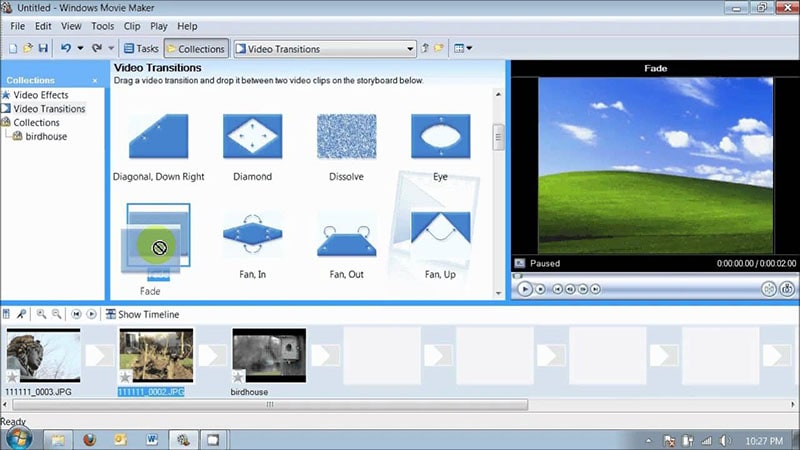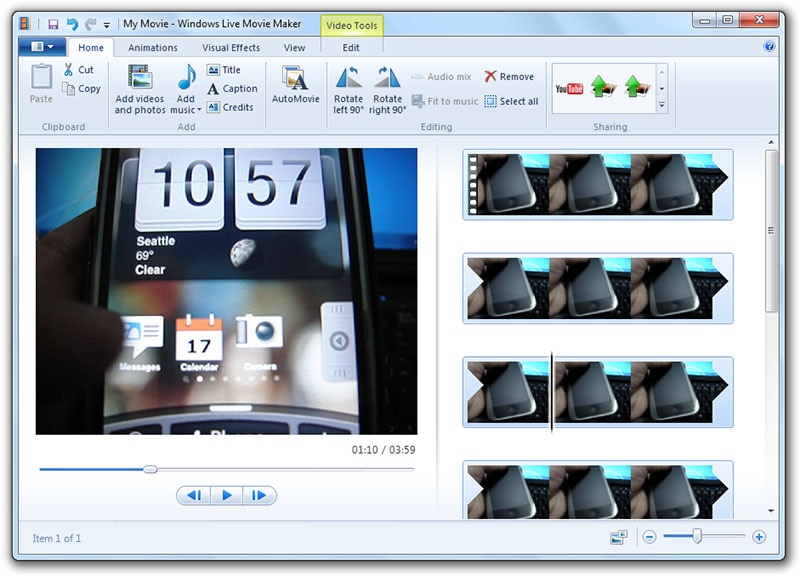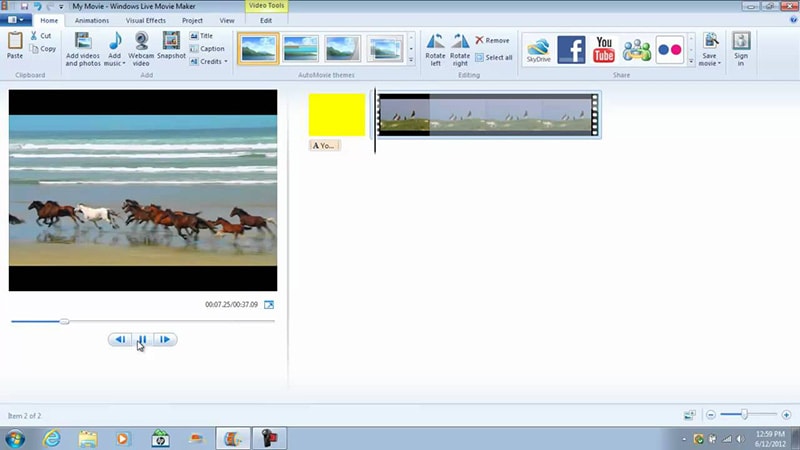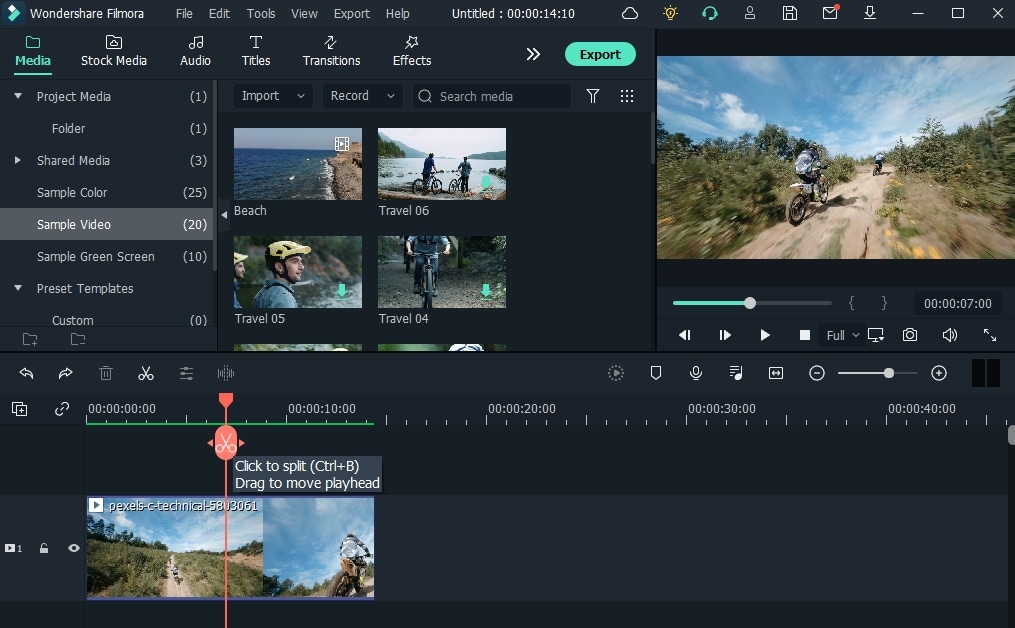![[New] Charting the Evolution of Windows Movie Maker](https://thmb.techidaily.com/b38051c9d12a2b8d1315fdc2f1d84dde69fd749e096f758fd9b3624bcd8211ec.jpg)
[New] Charting the Evolution of Windows Movie Maker

Charting the Evolution of Windows Movie Maker
In order to improve its performance, Microsoft continued to make changes to old Windows Movie Maker. Every time there is a new edition, Microsoft adds a bit more functionality and depth to provide the user an interesting experience. Microsoft gave users free access to its inventions by integrating Movie Makers’ most recent version inside its operating system. You may consult this guide for further information if you need a more modern service.
The Windows Movie Maker old version has had a ton of options, including music, narration, transition effects, and more. Since Microsoft no longer develops Movie Maker, there won’t be any new software upgrades. Microsoft created the program for laptops and desktop Windows PCs. To manipulate the multimedia clips that are on the right side of the screen, use the tabs. Your adjustments may be seen in the old Windows Movie Maker by using the UI’s left side. Learn more about the details of old version of Windows Movie Maker here:
1. First Release
Download Link: Windows Movie Maker
The initial version was included with Windows Me in 2000, but Windows 2000, which came out months before, did not have it, which is why it was missing from the latter. Industry players didn’t really pay much attention to WMM since it didn’t provide enough features to compete with its rivals. Microsoft chose to produce version 1.1 after realizing WMM’s drawbacks. That version was made available at the same time as the Windows XP OS from Microsoft.

For this, Windows Movie Maker’s first port was created. On the right side, a video preview is shown. There is room to add images, music, and other media on the left. The plot may be found at the very bottom. Even with capabilities like file input, live video recording, clip segmentation, clip organization, post-production editing, Windows Media file export functionality, and email sharing ability, the WMM version was still subpar.
Download Link: Windows Movie Maker
When Windows Vista was introduced in 2006, Microsoft included a new version of Windows Movie Maker with the new operating system. The video editing tool now has a number of sophisticated capabilities, including fresh effects and transitions. A video editor with a basic set of features designed in the manner of the operating system, Windows Movie Maker for Windows XP. The application is ideal for making and editing straightforward videos, applying basic transition effects, and animating.

Additionally, certain Vista development builds included with this edition of Windows Movie Maker. The program was simple to use and integrated with Microsoft’s applications. By dragging and moving the item on the time code, you may employ multimedia material in the project with the helpful explorer. A capture wizard included with WMM6 produces DVR-MS-style files from HDV tapes but is unable to record video. Vista is needed for installation. The most recent version of Windows Movie Maker for Windows XP is available for free download in English.
3. Windows Live
Download Link: Windows Movie Maker
Microsoft chose to offer a new version of Windows Movie Maker after recognizing that it would not be compatible with other operating systems when it was developed for Vista. As a stand-alone utility, Microsoft releases this product on the market. On August 19, 2009, Microsoft officially made it available as a standalone product. To create animated films, you may effortlessly import, edit, and save audio, picture, and video data using Live Movie Maker’s user-friendly interface. Due to its inability to read projects made by older versions, this program was in fact brand-new.

This version is marketed as the Windows Live Essentials package. This suite includes several extra capabilities, such as the Auto Movie option, which makes it simple to export video files to YouTube and DVD. It did not, however, allow any custom XML transitions created for earlier versions. Numerous functionalities were also eliminated. The most recent version, Windows Live Essential 2011, revolutionized the digital market with webcam capture, HD video compatibility, and file uploading to social networking sites like Facebook, Sky Drive, etc.
4. Windows Movie Maker 2012
Download Link: Windows Movie Maker - Windows Essentials
Windows Movie Maker 2012 was published in April 2012 after the demise of the Windows Live brand. In contrast to Windows 7 or 8, Windows 10 may not automatically install the Movie Maker editing program on your PC. But do not worry; all you need to do is download Movie Maker since it is still compatible with Windows 10.

With this update, features including webcam capture, HD video capability, direct video uploading to SkyDrive, Facebook, and YouTube, and the option to use network share media assets in projects were all included. Along with an audio mixer, connectivity with a number of free stock music providers, and capability for voice-over recording, it also offered a function that was special to Windows 8 users. Download Movie Maker by clicking on the aforementioned link.
5. Windows Movie Maker Discontinued
Windows Live Movie Maker is available for free download for Windows 10, Windows 8.1, Windows 8, and Windows 7 32- and 64-bit operating systems. You won’t be distracted by the platform’s in-app adverts. Officially removed from its servers, Windows Movie Maker was by Microsoft. Downloading it is no longer possible. Many people were disappointed by Microsoft’s decision to leave Windows Movie Maker out of version 10. They have entirely ceased providing support for the once well-liked program for Windows 7.1 and Windows 8.
But there is still some hope. Windows included a movie editing feature in the Photos app that essentially does everything Windows Movie Maker could. In order to make your video come to life, you may create and modify it as well as add music, text, filters, and 3D effects. You may still download the Windows Movie Maker program, however the Microsoft Store formally stopped selling the software in 2017. The Microsoft Photos app’s built-in Video Editor was used to replace the multimedia tool by the developers. Below is the best alternative you may find.
6. Alternative Software to Edit Videos on Windows PC
As of now, Microsoft has stopped supporting Windows Movie Maker as of January 10, 2017. However, those who prefer Windows Movie Maker may still use it since it will still remain operational. The main product of a software for creating and editing videos is called Filmora. The tools allow you to create a broad range of styles and looks. The application is simpler and easier for novices to use. You can edit your video like a pro at home with the aid of this application.

Free Download For Win 7 or later(64-bit)
Free Download For macOS 10.14 or later
Filmora by Wondershare is arguably the greatest option because of how simple it is to find and use all of its features. To add an effect to your timeline, just find it and drag it there. Any function you want to utilize may be found and used promptly. It’s not tough to make fantastic movies with this user-friendly tool and chic effects. When you launch the program, choose Editor mode so that it can guide you through each step of the process. Users of Filmora may also export video in a variety of file formats including the top famous Mp4 as well as in GIF.
Takeaway
A unique production may be made by modifying and combining audio, image, and video data in Windows Live Movie Maker, a flexible movie editor. To use the service and make your own movie, you don’t need any prior expertise or technical training. In a tabbed user interface modeled like Microsoft Office programs like Word, PowerPoint, and others, the well-known software allows you to create movies. But for the greatest performance, we advise Filmora, a trustworthy video editor with a remarkable feature set, especially for its low cost.
Free Download For macOS 10.14 or later
Filmora by Wondershare is arguably the greatest option because of how simple it is to find and use all of its features. To add an effect to your timeline, just find it and drag it there. Any function you want to utilize may be found and used promptly. It’s not tough to make fantastic movies with this user-friendly tool and chic effects. When you launch the program, choose Editor mode so that it can guide you through each step of the process. Users of Filmora may also export video in a variety of file formats including the top famous Mp4 as well as in GIF.
Takeaway
A unique production may be made by modifying and combining audio, image, and video data in Windows Live Movie Maker, a flexible movie editor. To use the service and make your own movie, you don’t need any prior expertise or technical training. In a tabbed user interface modeled like Microsoft Office programs like Word, PowerPoint, and others, the well-known software allows you to create movies. But for the greatest performance, we advise Filmora, a trustworthy video editor with a remarkable feature set, especially for its low cost.
- Title: [New] Charting the Evolution of Windows Movie Maker
- Author: Daniel
- Created at : 2024-07-25 04:29:07
- Updated at : 2024-07-26 04:29:07
- Link: https://extra-resources.techidaily.com/new-charting-the-evolution-of-windows-movie-maker/
- License: This work is licensed under CC BY-NC-SA 4.0.

